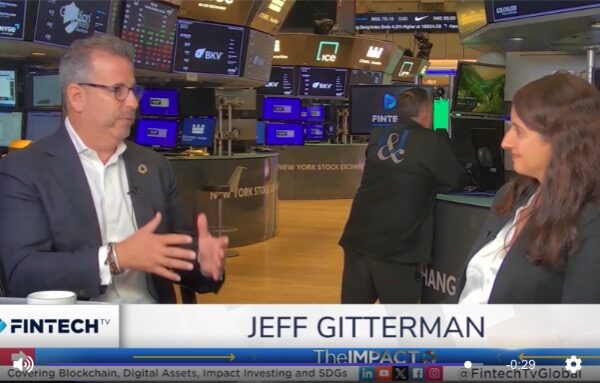INTRODUCTION
Climate investment leaders spanning policymaking and financial services met virtually to discuss the evolution of climate data and the current state of corporate commitments to tackle and mitigate climate change. The conversation’s overarching rubric was the persistent problem of data — who has it and who doesn’t, and how to make it more relevant and useful for climate risk management and investing.
Participants — a majority representing global firms active in climate risk and investment — exchanged views on making sense of the flood of new (but not necessarily useful) data available to help stakeholders make better climate change-informed decisions. They shared perspectives on the current state of corporate ESG commitments. And they explored the implications of organizational size and access to resources — the different circumstances large and small firms encounter as they face the increasingly urgent challenge of climate-aware investing.
Key Takeaways
Industry concerns over data quality have persisted — and grown — as climate investment leaders confront a world of ‘excessive but insufficient’ information
After a decade or more of innovation, development and regulation, the consensus among participants is that there is almost too much climate data available. This flood of data continues to limit analysts’ and investors’ ability to make useful comparisons, whether among sources or entities. To be sure, companies today do a much better job reporting such metrics as their carbon footprint, compared to what they were providing eight or 10 years ago — when insights on corporate ESG practices in general were scant. But most participants consider data such as carbon footprint questionable because it is self-reported and backward-looking, making it difficult to benchmark and compare even within the same industry.
Participants described an environment in which institutions are meeting this challenge in divergent ways — with varying degrees of satisfaction. One recommended that companies sort data, as his organization does, into three categories: climate risk data, emissions data and internal data. Another participant suggested two categories: sustainability data, on one hand, and climate-risk data pertaining to resilience on the other. Yet another prefers to think in terms of user type: institutions seeking to make their own assessments versus institutions seeking an ESG “label” on their products. Another, from a large global institution, recommended, amid the noise, to select a single data source and stick with it.
For Further Discussion…
Having described a world of excessive but insufficient data, how do we move beyond it — and specifically advance toward useful and relevant data? Can we agree on a set of objectives and how we would prioritize them?
Verbatims:
“We are living in a world of data. This data is both excessive and insufficient: insufficient because we may not have the data we desire; excessive because there are lots of solution providers, lots of regulations and lots of qualitative and quantitative data.”
“Companies are doing a better job reporting data today than they did a decade ago. Companies have also figured out how to make themselves look better, and they’re doing a better job of reporting on things that they think big data providers will gravitate towards.”
“There has been a rush to try to manage the metrics vs. actually investing in solutions. This has been driven by the data, but also by a misunderstanding of what that data means.”
“Is data applicable across company data sets, across sub-industry sets? Is it uniform in a way that it can inform us? How useful is this information? Do we trust it? How broadly can we apply it?”
“There are certain limitations regarding many of the metrics being used because they are self- reported by companies, are almost always backward-looking and sometimes they are using stale data. They don’t really inform the user about what we would collectively like to invest in.”
“Do investors want to score companies on what they’ve already done? Or on what their plan is and where they are leaning in terms of commitments? Ultimately, you need both views and putting that together into one score isn’t always going to be the right answer.”
“We’re moving globally to something of a universal consensus on the environmental/climate piece because at least people are focusing on some metrics like greenhouse gas emissions. Whereas, reporting on the ‘S’ and the ‘G’ is all over the place, depending on where you are.”
Key Takeaways
Participants increasingly find themselves eager for regulators and legislators to take a firmer hand — and provide more statutory oversight.
A big part of the hesitancy around climate data is the lack of independent validation. Participants said the data ecosystem could benefit from a two-point verification system. They contended that regulations can help because they provide a level playing field and a starting place for comparison. The European Union’s classification of investment strategies as not sustainable or sustainable under the EU Sustainable Finance Disclosure Regulation (SFDR) is one example of useful regulation.
More is needed, however. The lack of global standards is a challenge for multinational companies and investors, making it difficult to compare businesses in differing regions and industries. The panelists said that one place where regulators might particularly help is providing foundational standards for raw data and by developing standardization around climate — and ESG — related indices. Panelists felt that both investors and regulators have been hampered by a desire for perfect outcomes and suggested all parties could benefit from adopting a mindset of experimenting with various approaches to find the best path forward.
Panelists recommended that regulators establish tools that follow the quality and transparency of the Carbon Transparency Initiative, which uses data from many sources to then forecast current rates of decarbonization that link today’s policies and market projections to future emissions. They also called for standardized regional and industry indices to facilitate useful investment comparisons.
For Further Discussion…
Is it time, finally, for the financial industry to throw its weight behind unified standards? Is this possible given the dispersed and fragmented nature of financial services regulation to begin with? What would it take for such a movement to take root? Where would leadership need to come from within the industry?
Verbatims:
“What regulations can achieve is avoiding a situation where you have different views about data to the extent that people may see it as not being worth the effort, and that brings it all tumbling down. Through the standardization of data and transparency, regulators can help avoid that problem.”
“With a minimum level of data standardization, we can be more creative and thoughtful on the investment side, and we could avoid a garbage-in, garbage-out type of outcome.”
“Let’s remove this need for perfection and work together collectively towards getting better information, better product, and better understanding around goals.”
“With government or regulator standards, we won’t have to rely solely on company-reported data. Data needs to be validated. Interpretability and validation are the key demands of the market.”
Key Takeaways
Smaller firms are at a data disadvantage when it comes to producing metrics that validate decisions and describe progress toward climate goals.
Perhaps not surprisingly, an organization’s size influences its climate capabilities. Many large firms have resources and capabilities that enable them to overcome data challenges — and produce glossy reports that reflect well on their climate credentials (the latter effort can at times be viewed as greenwashing). Large organizations and banks also have the ability to go deep when it comes to understanding mission-critical climate risk exposures — for example, a lender’s assessment of physical risk to assets underlying its loans. But most small companies are challenged when it comes to gathering and interpreting climate and ESG data, which means they typically must rely on third-party options, including various rating agencies. As all participants look to move past the problem of subjective, backward-looking and self-reported data described above, participants from smaller institutions feel the pain more keenly.
Participants suggested that corporations focus more on forward-looking data instead of past achievements and they encouraged large companies to open up their raw data to peer review so that climate-data experts can help pinpoint standards for companies to adopt. One way policymakers could improve matters is by demanding that corporate climate and ESG data be validated.
For Further Discussion..
Formation of data ecosystems may hold some promise: Can we envision a marketplace in which large global institutions or organizations draw customers and counterparties under a shared data framework and platform? What is the likelihood of this sort of interconnected marketplace becoming a reality? (Have the seeds already been planted? If so, where?) And what are its risks and benefits?
Verbatims:
“I’m at a smaller client-facing advisory firm where my access to actual, granular ESG data that I can use has become significantly worse because we don’t have the funds and the resources to access data.”
“We rely on research and products that are built by others, based on their research. The difficult part for me is when I’m trying to construct a portfolio for a client who I know has specific constraints, how do I understand the different criteria, the different metrics and measures that the different providers are using and put those together in a way that at least approximates the client’s actual desires?”
“Smaller firms are more dependent on research and data providers to drive analytics based on the raw data. How are we going to be able to service all of these different clientele? I don’t know if we’re ever going to get there.”





